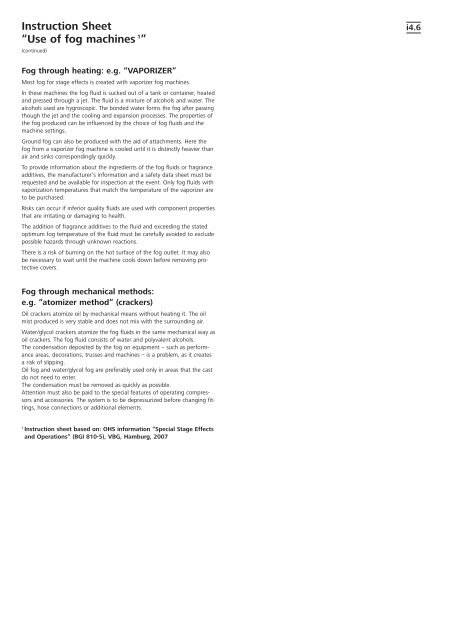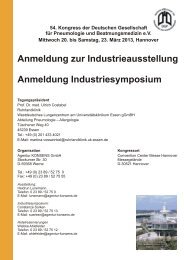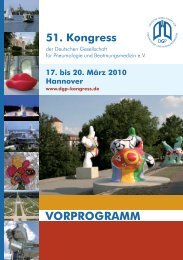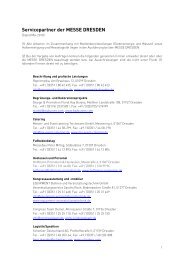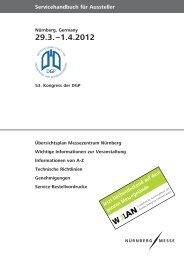Instruction Sheet - Agentur KONSENS
Instruction Sheet - Agentur KONSENS
Instruction Sheet - Agentur KONSENS
Create successful ePaper yourself
Turn your PDF publications into a flip-book with our unique Google optimized e-Paper software.
28<br />
<strong>Instruction</strong> <strong>Sheet</strong><br />
“Use of fog machines 1 ”<br />
(continued)<br />
Fog through heating: e.g. “VAPORIZER”<br />
Most fog for stage effects is created with vaporizer fog machines.<br />
In these machines the fog fluid is sucked out of a tank or container, heated<br />
and pressed through a jet. The fluid is a mixture of alcohols and water. The<br />
alcohols used are hygroscopic. The bonded water forms the fog after passing<br />
though the jet and the cooling and expansion processes. The properties of<br />
the fog produced can be influenced by the choice of fog fluids and the<br />
machine settings.<br />
Ground fog can also be produced with the aid of attachments. Here the<br />
fog from a vaporizer fog machine is cooled until it is distinctly heavier than<br />
air and sinks correspondingly quickly.<br />
To provide information about the ingredients of the fog fluids or fragrance<br />
additives, the manufacturer’s information and a safety data sheet must be<br />
requested and be available for inspection at the event. Only fog fluids with<br />
vaporization temperatures that match the temperature of the vaporizer are<br />
to be purchased.<br />
Risks can occur if inferior quality fluids are used with component properties<br />
that are irritating or damaging to health.<br />
The addition of fragrance additives to the fluid and exceeding the stated<br />
optimum fog temperature of the fluid must be carefully avoided to exclude<br />
possible hazards through unknown reactions.<br />
There is a risk of burning on the hot surface of the fog outlet. It may also<br />
be necessary to wait until the machine cools down before removing protective<br />
covers.<br />
Fog through mechanical methods:<br />
e.g. “atomizer method” (crackers)<br />
Oil crackers atomize oil by mechanical means without heating it. The oil<br />
mist produced is very stable and does not mix with the surrounding air.<br />
Water/glycol crackers atomize the fog fluids in the same mechanical way as<br />
oil crackers. The fog fluid consists of water and polyvalent alcohols.<br />
The condensation deposited by the fog on equipment – such as performance<br />
areas, decorations, trusses and machines – is a problem, as it creates<br />
a risk of slipping.<br />
Oil fog and water/glycol fog are preferably used only in areas that the cast<br />
do not need to enter.<br />
The condensation must be removed as quickly as possible.<br />
Attention must also be paid to the special features of operating compressors<br />
and accessories. The system is to be depressurized before changing fittings,<br />
hose connections or additional elements.<br />
1 <strong>Instruction</strong> sheet based on: OHS information “Special Stage Effects<br />
and Operations” (BGI 810-5), VBG, Hamburg, 2007<br />
i4.6


